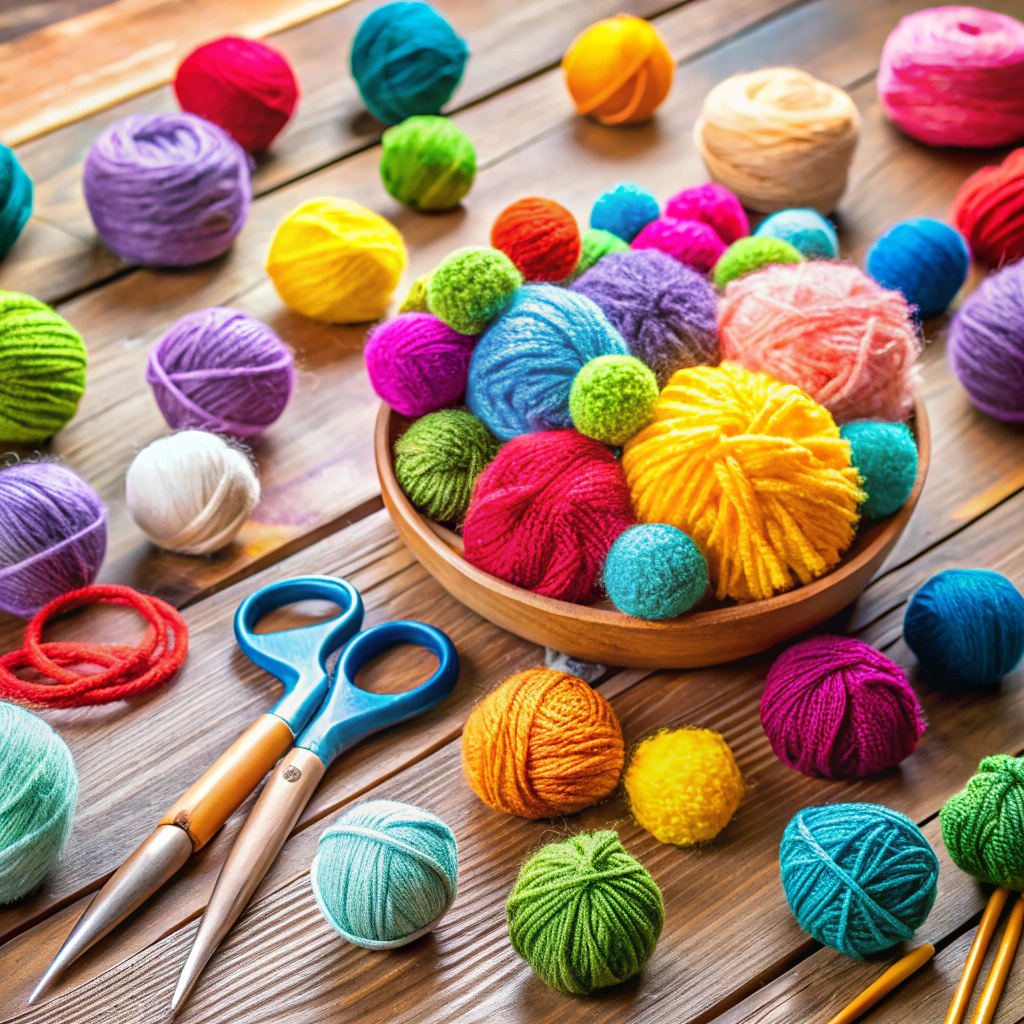Determining how much yarn to cast on one hundred stitches can dramatically improve your knitting projects, because it mitigates the risk of running out of material mid-way.
Determining the amount of yarn needed to cast on 100 stitches can vary based on a few factors such as yarn weight, needle size, and your personal tension. As a general rule of thumb, you should allow 3 times the width of your final piece for each cast on stitch. So, if your project is 20 inches wide, you would need approximately 60 inches of yarn to cast on. However, to ensure you have enough yarn and to account for variations, it’s always a good idea to add a little extra. This article will delve into all the details, providing a comprehensive guide on how to calculate the amount of yarn you’ll need for your knitting projects.
Key takeaways:
- Estimation is essential for determining the amount of yarn needed.
- Overestimating is okay to avoid running out of yarn mid-cast.
- The slip knot affects the total amount of yarn used.
- Practice helps to develop a sense for the yarn amount needed.
- Different methods, such as the Rule of Thumb or Two Strand Cast On, can be used to estimate yarn requirements.
Determining Long Tail Cast On Length

Initially, it will be beneficial to know that the Long Tail Cast On technique uses a significant amount of yarn – usually more than what actually constitutes your knitting stitches. It constitutes a single loop of yarn around the needle for every stitch, plus an additional length to create the ‘tail’ for each stitch. This ‘tail’ is an integral part of forming each stitch in the long-tail method.
Here are some key concepts to understand about determining the required yarn length:
- Estimation Is Essential: You’ll need to estimate the amount of yarn for casting on, based on the total number of stitches and the required tail length for each stitch.
- Overestimation Is Okay: To avoid running out of yarn mid-cast, overestimating how much you’ll need may be helpful.
- The Slip Knot Affects Length: The place where you make the slipknot on your yarn – your starting point for casting on – can affect the total amount of yarn you use.
- Practice Makes Perfect: As you advance in knitting, you’ll get a better sense of how much yarn is needed for a long tail cast on, based on previous projects.
Remember, this method requires a bit of trial and error at first, but as you gain experience, it becomes easier to estimate the required length of yarn.
Rule of Thumb Method for Yarn Requirements
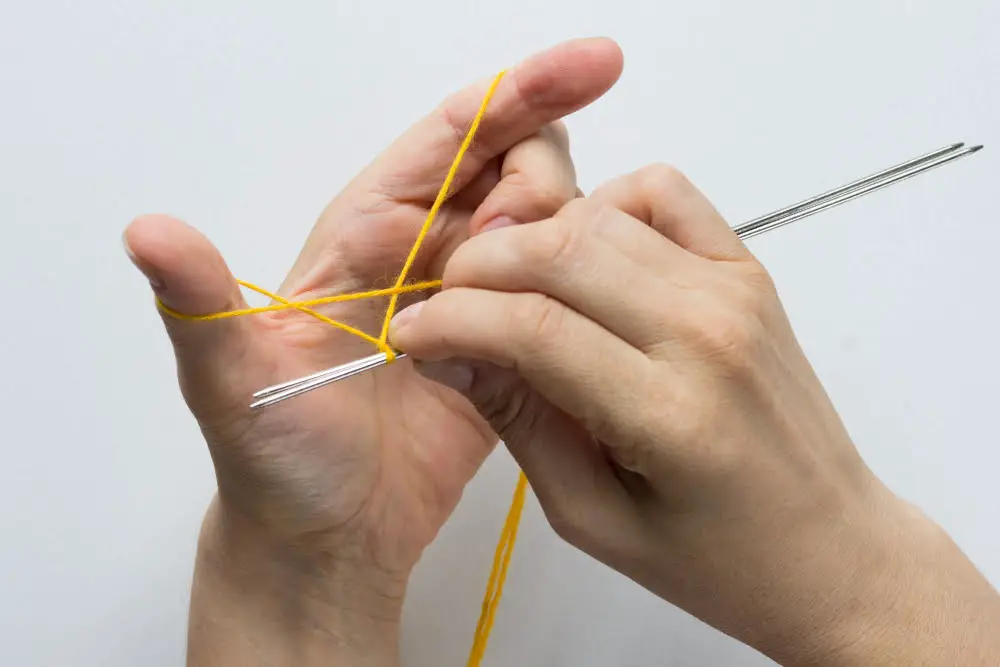
The “Rule of Thumb” offers a quick, basic approach for novice crafters: each stitch, with this method, is said to require roughly one thumb’s length of yarn for a Long Tail Cast On. For larger projects, this rule may cause slight inconsistencies, but it provides an easy starting point.
Consider these points:
- 1. To cast on 100 stitches, measure out approximately 100 thumb lengths of yarn. You can do this by repeatedly extending and folding the yarn across your thumb.
- 2. Remember to ensure your thumb length is somewhere in the range of 2 inches, as this will provide an adequate yarn amount for each stitch.
- 3. Keep in mind that this method is an estimation. Many factors, such as yarn thickness and tension, can influence the actual yarn amount required.
- 4. When in doubt, add a little extra. It’s far better to have a bit too much yarn than to run out mid-cast.
- 5. Practice this method with smaller projects. As you gain experience, you’ll develop a sense for the yarn amount needed for different stitch counts and yarn types.
Two Strand Cast On Method
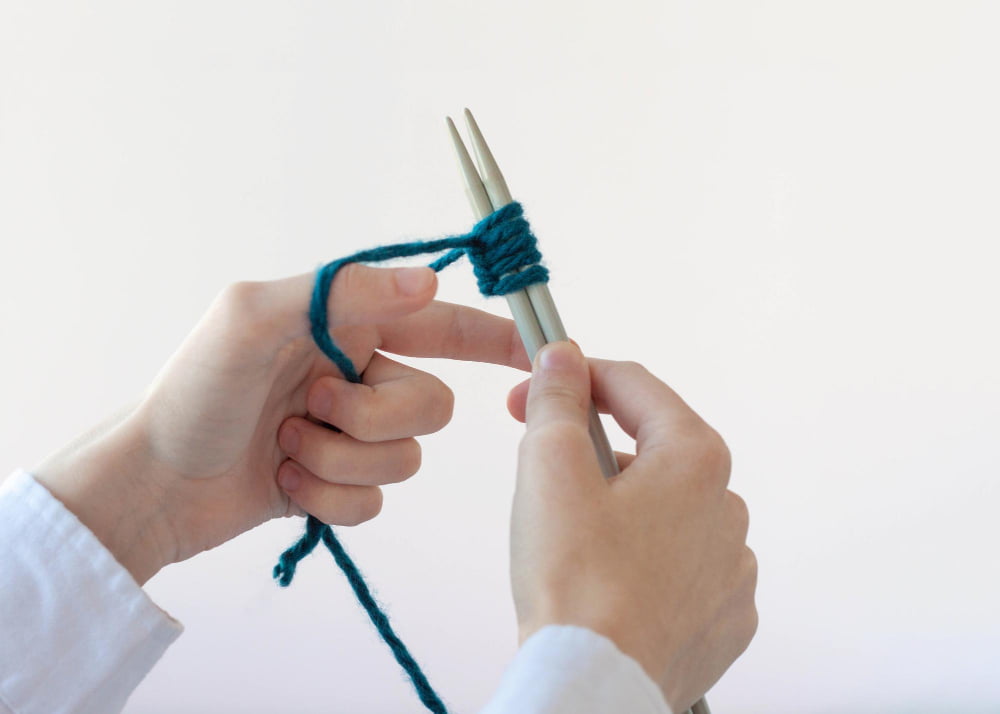
Initiated at the outset of your project, this procedure involves using two strands of yarn from different balls or from both ends of the same ball. Doing this allows for an accurate estimation of yarn length without running out mid-way through your stitches. Remember, both strands are held together and treated as one.
Here’s a guide to follow:
- 1. Make a slipknot using both strands. This counts as your first stitch.
- 2. For the desired number of stitches, cast on as you would normally do with just one strand.
- 3. If you reach the desired stitch count and there’s still unused yarn, merely cut one strand leaving about a six-inch tail.
- 4. If you’re using yarn from different balls and you have excess, simply wind it back.
With this method, you can cast on 100 stitches, or any number you desire, without the fear of underestimation. Feasibly adjust the yarn quantity to meet your specific project requirements.
Yarn Wraps Method for Calculating Yarn Needed
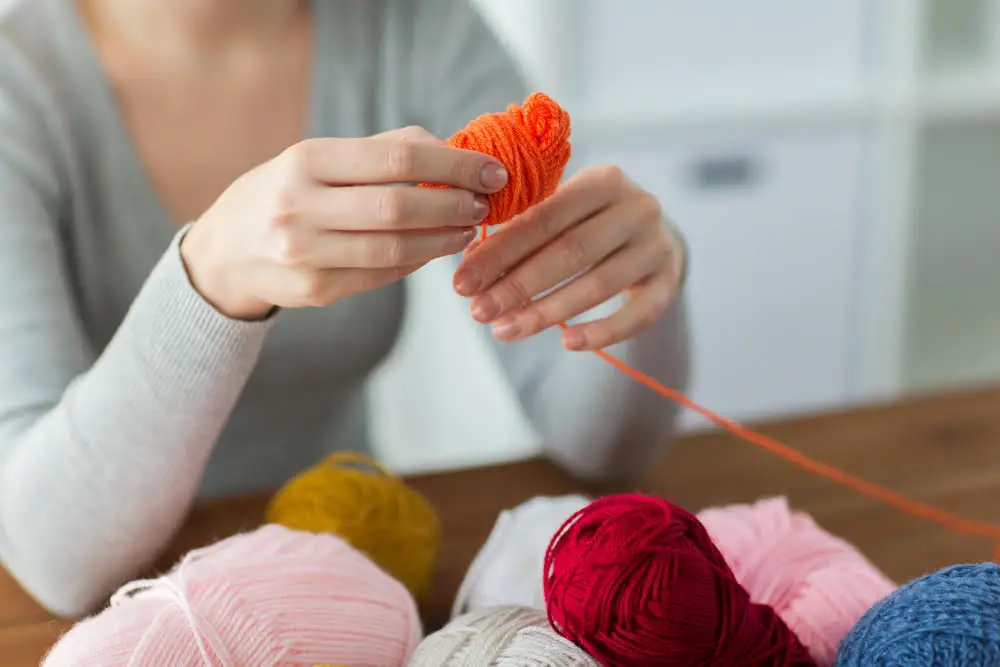
To utilize the Yarn Wraps Method, start by wrapping your selected yarn around a large knitting needle or your thumb roughly 10 times. The total length of these wraps is representative of the yarn required to create ten stitches. Measure this length and then multiply it by 10 to find the total yarn needed for 100 stitches.
In addition to casting on, remember to calculate the yarn required for both seaming and finishing as well. A simple way to approximate this additional amount is by adding half of the yarn calculated for the stitches.
This method allows for a tangible and visual approach in estimating yarn requirements and is particularly useful when wrangling bulkier yarns where other methods might be less accurate. Noting the thickness and texture of the yarn while wrapping can also provide added insight into how it will behave when knitted.
Keep in mind, this estimation does not account for individual knitting tension and might result in leftover yarn. Also, working loosely with the wraps will ensure a more accurate measurement, as tight wrapping can lead to an underestimation of the yarn needed.
Zig-Zag Loops Method for Calculating Yarn Amount
For this method, begin by unspooling a length of yarn that extends from your fingertip to your elbow. Create a zig-zag pattern by alternating the yarn between your thumb and little finger. Each zig and zag represents one stitch. Continue this back-and-forth motion until you have the desired number of stitches.
Make sure to keep a loose zig-zag pattern. Tight loops will lead to a shorter length, and potentially not have enough to complete the cast on. Once you’ve made your zig-zags, measure out a tail three times the width of the project to ensure a smooth and complete bind off. Remember, it’s always better to over-estimate, as extra yarn can be woven into your project, while an insufficient amount can cause unnecessary starts, stops, and adjustments.
Now, pull gently on the yarn to straighten out the zig-zags, giving you your cast on length. After cutting the yarn, you’re ready to begin casting on your stitches.
Stitches Per Inch Method for Estimating Yarn
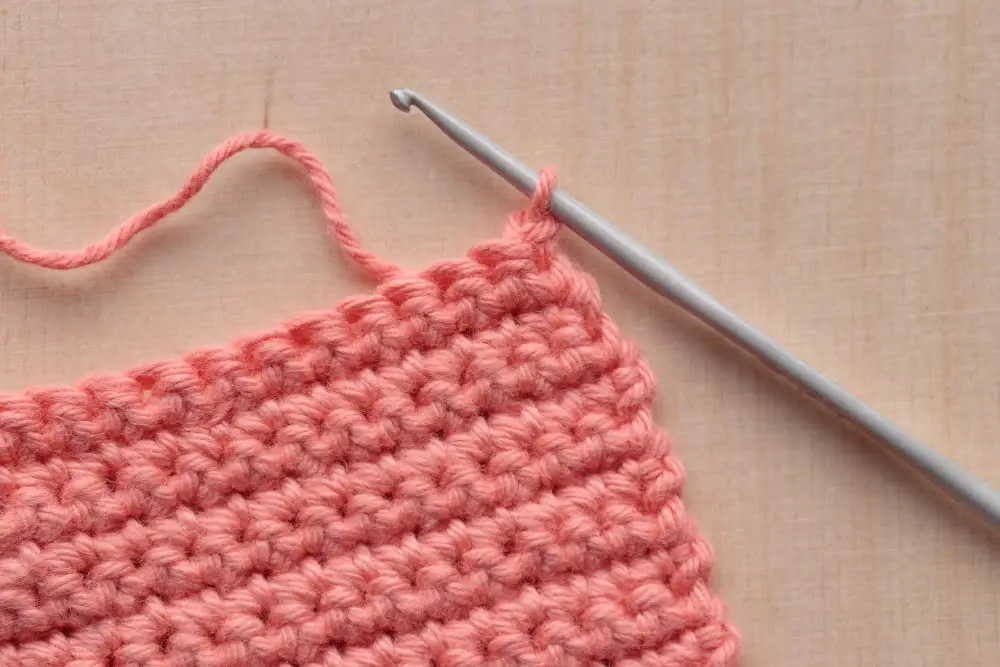
First, to employ this method, swatch the chosen yarn with the knitting needles planned for the project. This helps gauge the number of stitches used per inch. Once that’s clear, multiply it by the desired number of stitches – 100 in this instance. The result obtained provides an estimated length of yarn needed.
Consider these points:
- Not all yarns create the same stitch size, even when using identical needle sizes. The thickness or thinness varies, affecting the stitch size.
- Don’t forget to factor in extra yarn needed for a comfortable tail to hold while casting on.
- Swatching may seem like an extra step but, ensuring the right amount of yarn from the beginning avoids possible hurdles such as running out too soon or having an excessive leftover.
- Be aware; this method gives an estimation, not a precise calculation.
This way, knitting turns into a less-stressful and enjoyable experience, keeping any unfortunate surprises at bay. Remember, practice brings proficiency, so do not get disheartened if calculations seem a little off initially. Happy knitting!
Understanding Yarn Thickness for Accurate Measurement
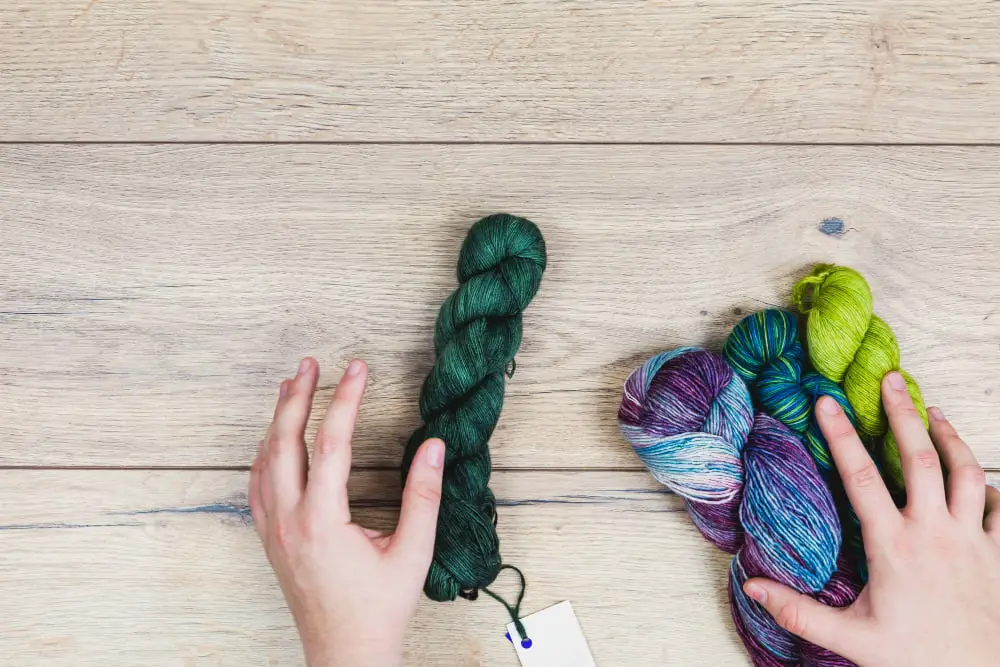
There’s a direct correlation between the thickness of yarn and how many stitches you can get per inch, which plays a significant role in calculating the necessary amount of yarn. It’s quite simple: thinner yarns have more stitches per inch, so you’ll need more length to cast on 100 stitches.
– Fingering weight yarn: Being the thinnest option, it delivers more stitches per inch. To cast on 100 stitches, you’ll require a longer length compared to thicker yarns.
– Worsted weight yarn: This middle-of-the-road option gives fewer stitches per inch than fingering yarn. Therefore, you’ll need less length to cast on 100 stitches.
– Bulky weight yarn: Since it’s thick and provides the fewest stitches per inch, you’ll need even less length to cast on 100 stitches.
Remember, the specific brand of yarn might have slight variations in thickness even within the same categories. Always check the yarn label; it should provide the expected stitches per inch using recommended needle sizes. You can complement this information with a gauge swatch to ensure an accurate measure.
Types of Yarn and Their Impact On Stitch Size

Every type of yarn brings with it unique characteristics that substantially influence the size of individual stitches. The kind of fiber, its weight, and twist all play a pivotal role.
1. Fiber Type: Merino wool, alpaca, and polyester, to name a few, can influence stitch size. Softer and more flexible fibers like Merino result in larger stitches, whereas more rigid fibers like linen tend to yield smaller stitches.
2. Yarn Weight: The weight of the yarn also heavily affects stitches size. Lightweight yarns like lace and fingering result in smaller stitches, while heavier yarns like bulky and super bulky produce larger stitches.
3. Yarn Twist: The twist or ply of the yarn can impact stitch size too. More twist creates a more substantial fabric and thus smaller stitches, whereas less twist can create a loftier fabric and larger stitches.
4. Wash and Wear: Some yarns have a propensity to “bloom” or fluff up after washing, which can affect stitch size. Additionally, some yarns have a characteristic called ‘drape’ that allows them to relax over time, potentially modifying stitch size too.
By understanding these variables, you can anticipate the type of yarn’s impact on your stitches, making it easier to decide the amount of yarn needed to cast on 100 stitches precisely. For more accurate results, always check the recommended gauge provided on the yarn label and consider conducting a swatch test first.
Calculating Additional Yarn for Bound Off Edge
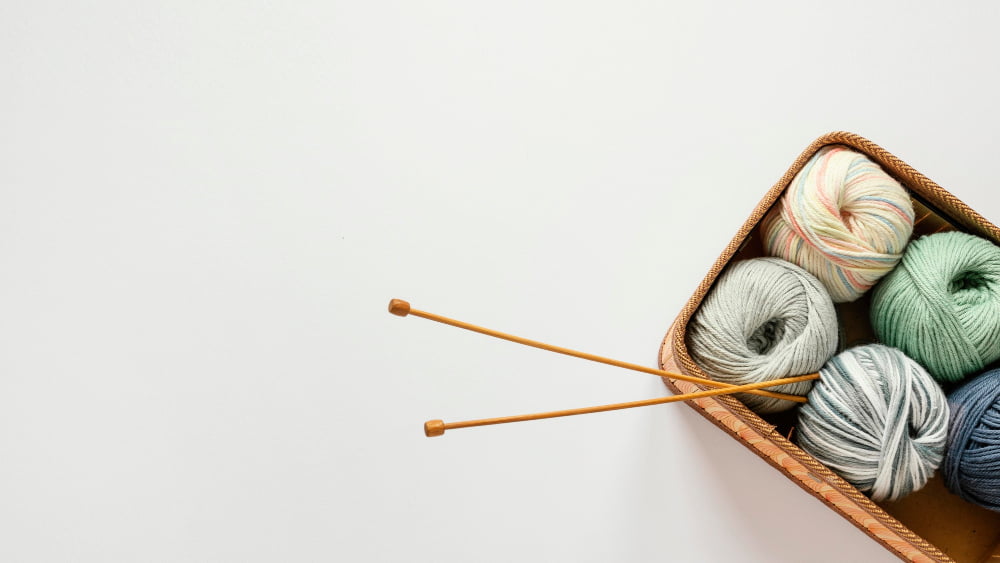
Always account for the yarn needed to bind off when planning your project. This is especially important as it ensures your work doesn’t unravel, guaranteeing a neat finish. Here are a few key points to help you calculate yarn requirements for binding off:
1. Match Stitch to Stitch: As a baseline, you’ll require a yarn length approximately four times the width of the piece for a standard bind off. This roughly equals the length of yarn used in one stitch for every stitch to be bound off.
2. Factor In Yarn Thickness and Needle Size: The thickness of your yarn and the size of your knitting needles can alter the amount of yarn required. Thicker yarns and larger needles typically require more yarn to bind off.
3. Bind Off Style Matters: If you’re using a decorative or more elaborate bind off, you may need extra yarn. Some styles can use up to five times the width of the knitting.
4. Keep a Buffer: It’s wise to have a little extra for buffering, unforeseen knots, or mistakes. Better safe than sorry—the last thing you want is to run out of yarn mid-bind off!
5. Practice Makes Perfect: Over time, you’ll get a feel for how much yarn different projects and bind off styles require. Feel free to experiment and make notes of your findings. This experience will make future projects much smoother.
FAQ
How much yarn do I need to cast 200 stitches?
To cast on 200 stitches for a cowl knitting pattern, you would need approximately 200 inches of yarn, plus a little extra for the yarn tail.
How do you calculate how many stitches to cast on?
To calculate how many stitches to cast on, you divide the number of stitches counted in your swatch by the swatch width measured, then multiply it by the desired width.
What type of yarn is best suited for casting on a large number of stitches?
Wool or wool blend yarn is often preferred for casting on a large number of stitches due to its flexibility and durability.
Are there specific techniques to help in accurately measuring yarn for a cast-on?
Yes, a common technique for accurately measuring yarn for a cast on is the “wraps per inch” method, where the circumference of a pencil or ruler is wrapped with yarn, counting the number of wraps in an inch to determine the length required for casting on.
How does the thickness of yarn affect the amount required for casting on stitches?
The thickness of yarn significantly influences the amount required for casting on stitches, as thicker yarn requires less length for the same number of stitches compared to thinner yarn.

